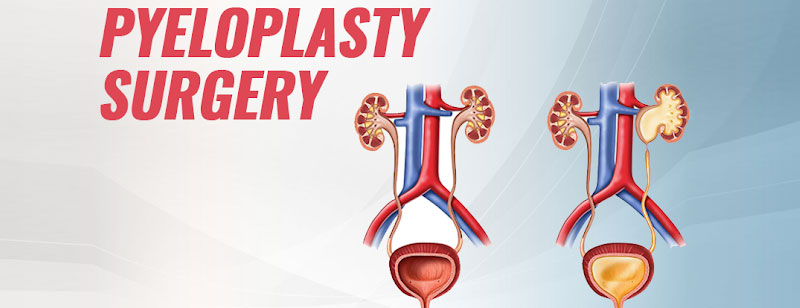Reconstructive Surgeries
Reconstructive surgeries are a category of surgical procedures aimed at restoring or repairing bodily structures and functions that have been altered, damaged, or lost due to injury, congenital conditions, disease, or other factors. These surgeries are performed by various surgical specialists, including plastic surgeons, orthopedic surgeons, and urologists, among others. The goal of reconstructive surgery is to improve a person's quality of life, functionality, and appearance. Here are some common types of reconstructive surgeries:
Stricture Urethra
Urethral stricture is a condition in which the urethra, the tube that carries urine from the bladder to the outside of the body, narrows or becomes blocked, leading to difficulty in urination. Several surgical techniques can be used to treat urethral strictures, including DVIU (Direct Vision Internal Urethrotomy) and various types of urethroplasties.
DVIU (Direct Vision Internal Urethrotomy):
- DVIU is a minimally invasive procedure performed using a thin, flexible instrument called a cystoscope.
- The surgeon inserts the cystoscope through the urethra to visualize the stricture.
- Using a laser or a knife-like instrument, the surgeon makes small incisions to open the narrowed area and improve urine flow.
- DVIU is suitable for short, simple strictures and may not be as effective for long or complex strictures.
Urethroplasty:
- Urethroplasty is a surgical procedure to reconstruct and repair the urethra, and it is often used for more complex or recurrent strictures.
- There are several types of urethroplasties, including: End-to-End Urethroplasty, Buccal Mucosal Graft (BMG) Urethroplasty, Staged Urethroplasty, Tube (Flap) Urethroplasty.
Pyeloplasties
Pyeloplasty is a surgical procedure performed to correct a blockage or narrowing of the renal pelvis, which is the part of the kidney where urine collects before it travels down the ureter and into the bladder. This condition is known as "ureteropelvic junction obstruction" (UPJ obstruction) and can lead to the backup of urine in the kidney, causing pain and potential damage to the kidney over time. Pyeloplasty aims to remove the obstruction and restore normal urine flow from the kidney to the bladder.
There are different techniques and approaches to perform pyeloplasty, depending on the specific circumstances and the patient's condition:
- Open Pyeloplasty
- Laparoscopic (Minimally Invasive) Pyeloplasty
- Robotic-Assisted Laparoscopic Pyeloplasty
Augmentation Cystoplasty
Augmentation cystoplasty is a surgical procedure used to increase the capacity of the urinary bladder by enlarging it. This procedure is typically performed in cases where the bladder has lost its ability to expand and store an adequate amount of urine due to various medical conditions, often resulting in high-pressure bladder contractions, incontinence, or urinary retention. Augmentation cystoplasty is primarily used to improve the bladder's functional capacity and relieve associated symptoms.
Procedure:
- The surgery involves removing a segment of the small intestine (ileum) or another portion of the gastrointestinal tract.
- The removed segment is then attached to the bladder, increasing its capacity.
- The mucous lining of the gastrointestinal segment is used to line the inner surface of the bladder, as it can tolerate urine without irritation.
- The enlarged bladder can now store a larger volume of urine at lower pressure, which can reduce incontinence or urinary retention.
Ureteric Reimplant
Ureteric reimplantation, also known as ureteral reimplantation, is a surgical procedure performed to correct anomalies, injuries, or other conditions involving the ureters. The ureters are the tubes that carry urine from the kidneys to the bladder, and reimplantation may be necessary for various reasons, including:
- Vesicoureteral Reflux (VUR): Vesicoureteral reflux is a condition in which urine flows backward from the bladder into one or both ureters, potentially reaching the kidneys. This condition is common in children and can lead to urinary tract infections and kidney damage. Ureteric reimplantation can be used to correct VUR.
- Ureteral Obstruction or Strictures: Ureteral obstructions or strictures can cause urine to back up into the kidneys, leading to kidney damage and urinary tract infections. Reimplantation may be necessary to correct these issues.
- Ureteral Trauma: If the ureters are damaged due to injury or surgery, reimplantation may be required to reconnect them properly.
- Congenital Anomalies: Some individuals are born with congenital anomalies of the ureters that require surgical correction through reimplantation.
The procedure involves repositioning or reattaching the ureter(s) to the bladder in a way that allows normal urine flow without the risk of reflux or other complications. The surgery can be performed using various techniques, including:
- Open Ureteric Reimplantation: In open surgery, an incision is made in the abdominal wall, and the ureter is surgically repositioned and reattached to the bladder. This approach is more common in complex cases.
- Laparoscopic or Robot-Assisted Ureteric Reimplantation: These minimally invasive techniques involve smaller incisions and the use of specialized instruments and a camera to perform the surgery. They often result in shorter hospital stays and quicker recovery.
- Endoscopic Ureteric Reimplantation: This approach involves the use of a cystoscope to access the ureter and make corrections without the need for external incisions. It is suitable for less complex cases.





